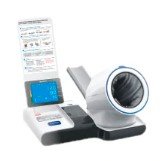Improving Patient Communication During Blood Collection Procedures: Strategies for Phlebotomists
Summary
- Establishing rapport with patients before the procedure can help alleviate their anxiety and build trust.
- Using clear and simple language to explain the procedures and answer any questions patients may have.
- Encouraging open communication and actively listening to patients' concerns can improve their overall experience.
Introduction
Phlebotomists play a crucial role in the healthcare system by collecting blood samples for diagnostic testing. This process can be stressful and anxiety-inducing for many patients, especially those who may have a fear of needles or medical procedures. In order to improve patient education and communication during blood collection procedures, phlebotomists must employ effective strategies that help alleviate patient anxiety and build trust.
Establishing Rapport
One of the most important strategies phlebotomists can use to improve patient education and communication is to establish rapport with their patients. Building a positive relationship with patients can help alleviate their anxiety and create a more comfortable and trusting environment for the blood collection procedure.
Tips for Establishing Rapport:
- Greet patients warmly and introduce yourself.
- Ask patients how they are feeling and address any concerns or fears they may have.
- Explain the procedure step-by-step to help patients feel more informed and in control.
- Listen actively to patients' questions and concerns and provide reassurance as needed.
Using Clear and Simple Language
Another important strategy for phlebotomists to improve patient education and communication is to use clear and simple language when explaining the blood collection procedures. Medical jargon can be confusing and overwhelming for patients, so it is crucial to use language that patients can easily understand.
Tips for Using Clear and Simple Language:
- Avoid using medical terms or abbreviations that patients may not be familiar with.
- Use visual aids, such as diagrams or charts, to help illustrate the procedure and what to expect.
- Encourage patients to ask questions and provide thorough explanations in response.
- Provide written instructions or educational materials for patients to take home.
Encouraging Open Communication
Encouraging open communication with patients is essential for improving patient education and communication during blood collection procedures. Phlebotomists should create a safe and welcoming environment where patients feel comfortable asking questions and expressing their concerns.
Tips for Encouraging Open Communication:
- Be approachable and friendly with patients to help put them at ease.
- Ask open-ended questions to encourage patients to share their thoughts and feelings.
- Provide opportunities for patients to voice any worries or fears they may have.
- Offer support and reassurance throughout the blood collection procedure.
Conclusion
Improving patient education and communication during blood collection procedures is essential for providing high-quality care and ensuring positive patient experiences. By establishing rapport, using clear and simple language, and encouraging open communication, phlebotomists can help alleviate patient anxiety and build trust, ultimately leading to improved outcomes and Patient Satisfaction.

Disclaimer: The content provided on this blog is for informational purposes only, reflecting the personal opinions and insights of the author(s) on the topics. The information provided should not be used for diagnosing or treating a health problem or disease, and those seeking personal medical advice should consult with a licensed physician. Always seek the advice of your doctor or other qualified health provider regarding a medical condition. Never disregard professional medical advice or delay in seeking it because of something you have read on this website. If you think you may have a medical emergency, call 911 or go to the nearest emergency room immediately. No physician-patient relationship is created by this web site or its use. No contributors to this web site make any representations, express or implied, with respect to the information provided herein or to its use. While we strive to share accurate and up-to-date information, we cannot guarantee the completeness, reliability, or accuracy of the content. The blog may also include links to external websites and resources for the convenience of our readers. Please note that linking to other sites does not imply endorsement of their content, practices, or services by us. Readers should use their discretion and judgment while exploring any external links and resources mentioned on this blog.
